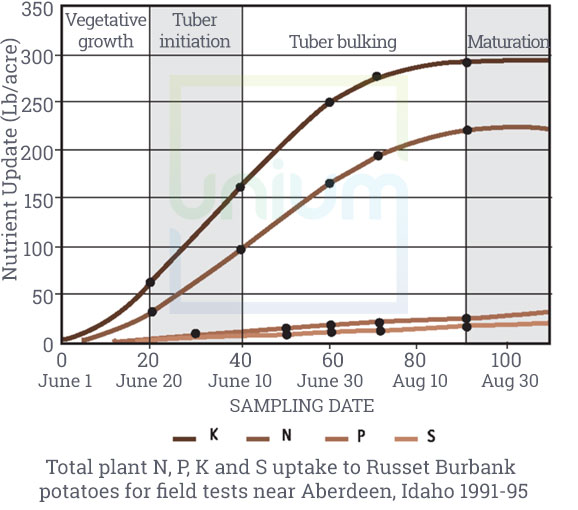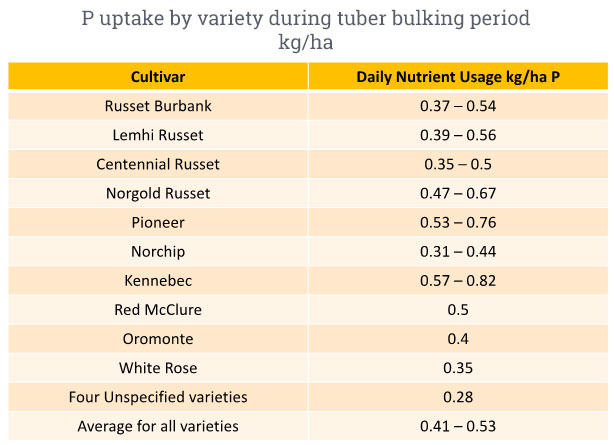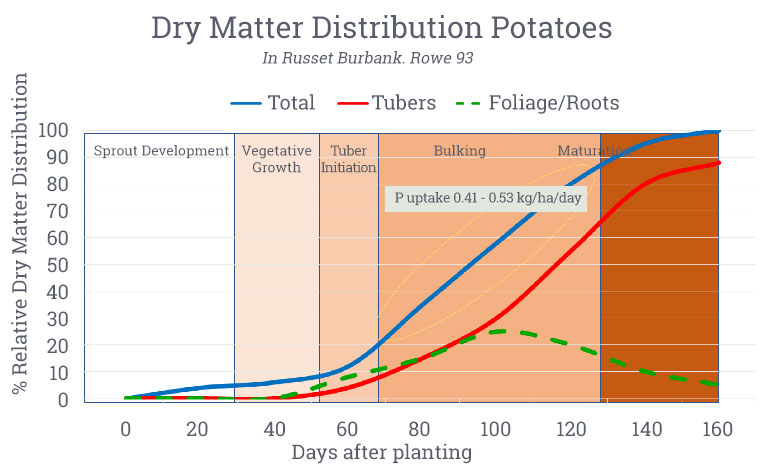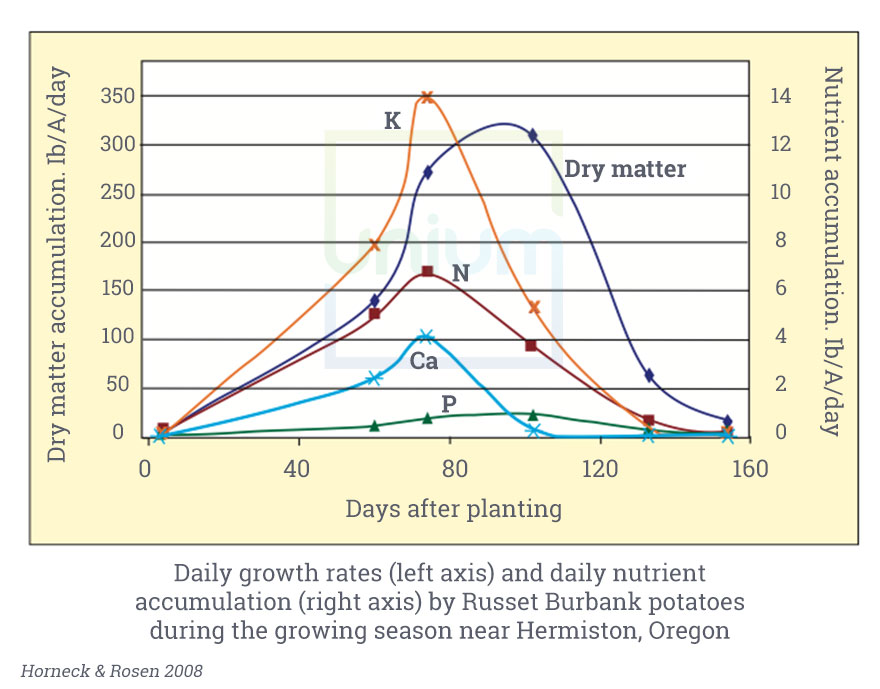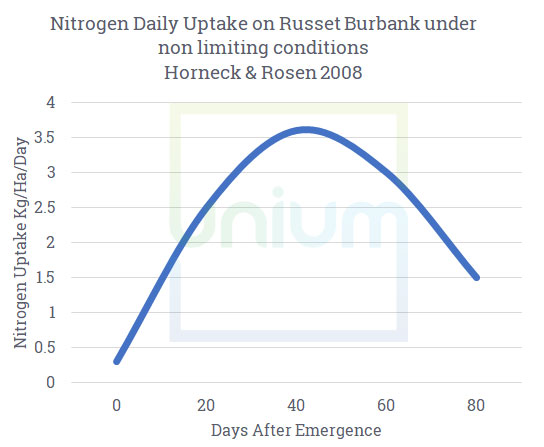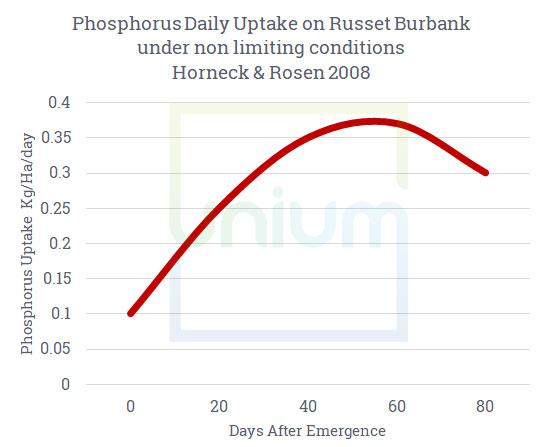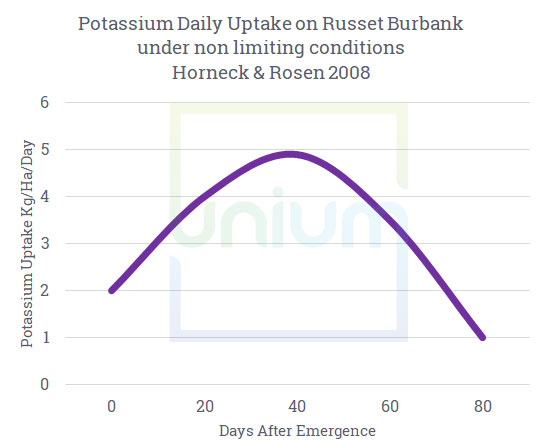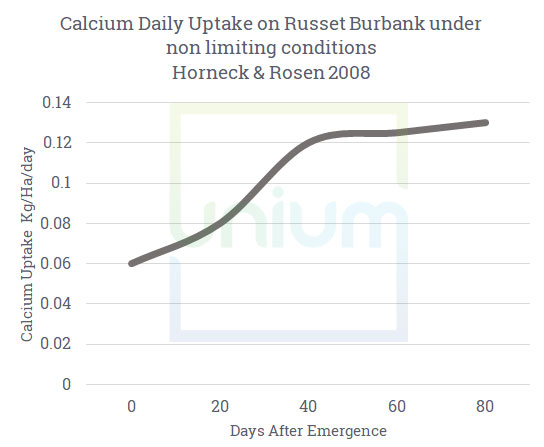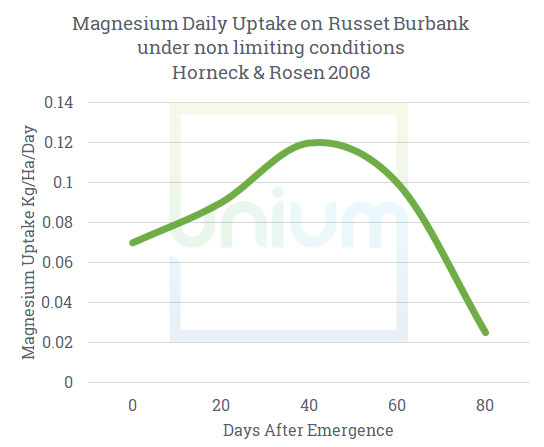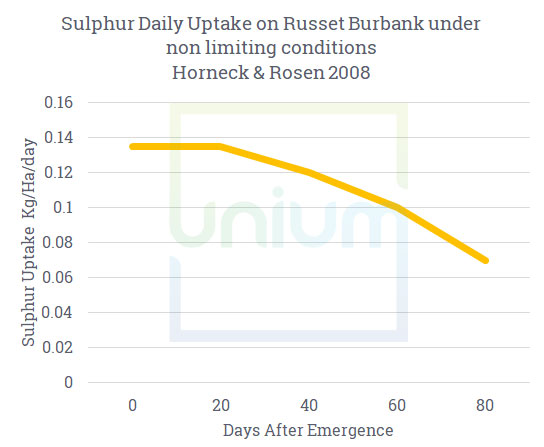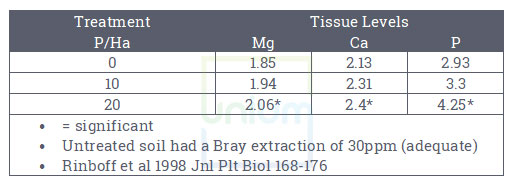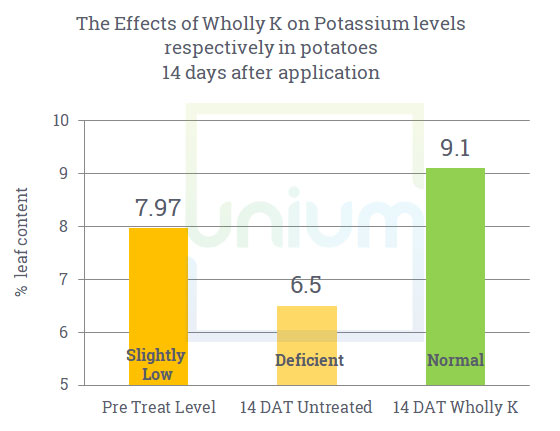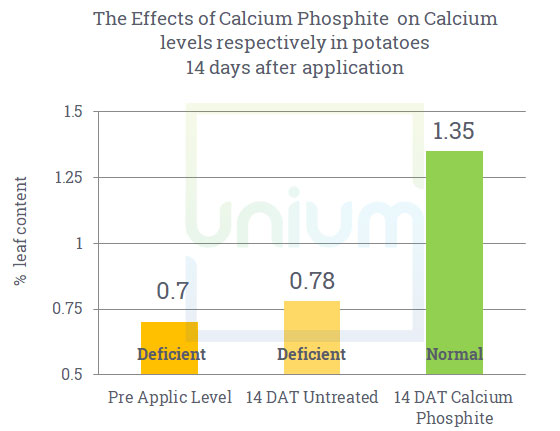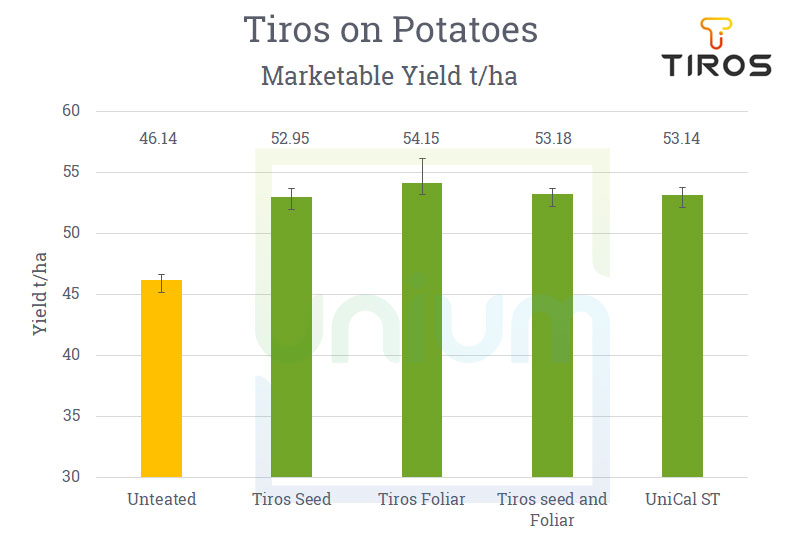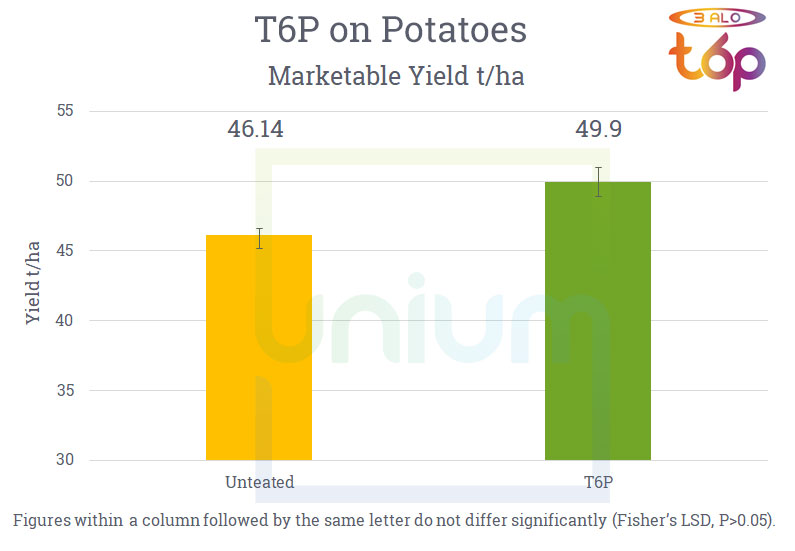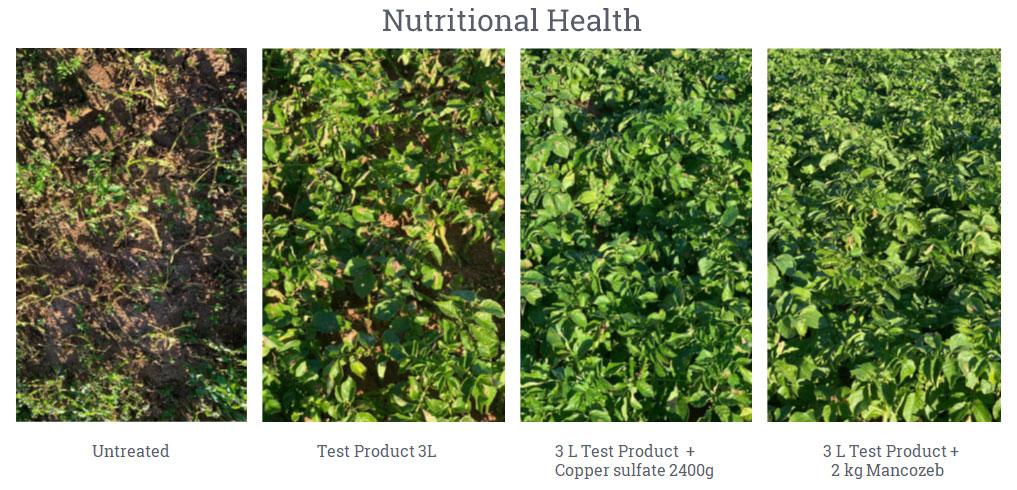Potato Update
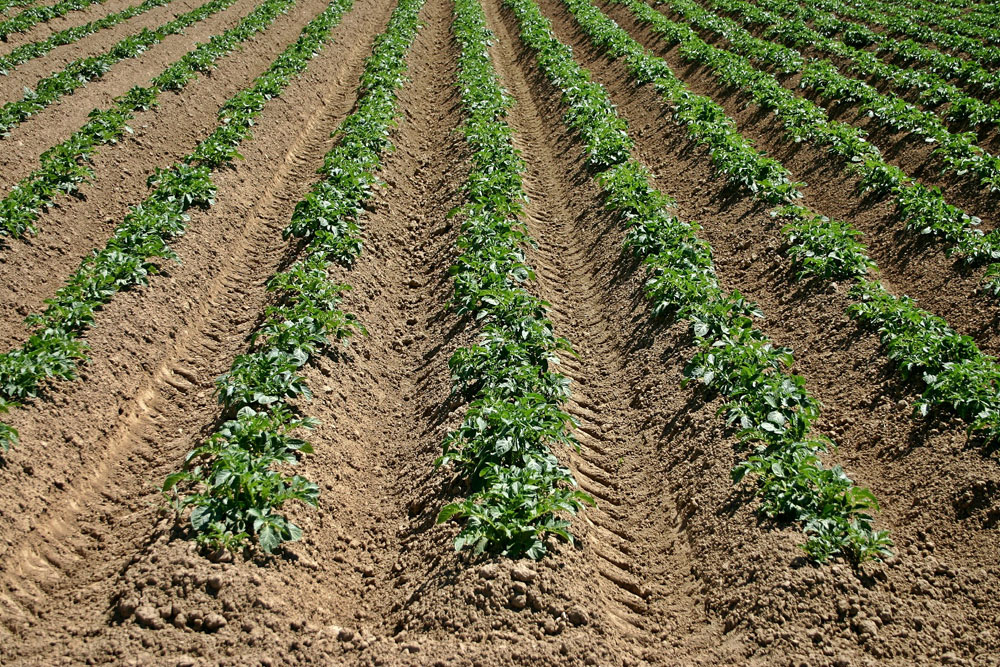
After a challenging start to the current potato season with dry weather, wet weather and very cold nights let’s hope it moves into a more settled growing period …… whatever that may be.
Here are a few thoughts for consideration with this years crop.
Below are some nutrient uptake graphs showing the nutrient demands of the crop and how they coincide to key growth stages – this allows us to monitor the crop to minimise any limitations and head-off any future issues early on.
Russet Burbank potato plants with tuber yields that range from 50 to 60 t/ha typically require the following amounts of macronutrients per acre:
- Nitrogen (N) 200 to 240 kg/ha
- Potassium (K) 280 to 320 kg/ha
- Phosphorus (P) 25 to 35 kg/ha
- Sulphur (S) 18 to 24 kg/ha
- Calcium (Ca) 50 kg/ha
- Magnesium (Mg 40kg/ha
Hopkins et al 1995
Nitrogen, around 60%, is usually taken up by 75 days after planting. Excessive N prior to tuber initiation can delay tuber bulking by up to 2 weeks and reduce yields so careful programmes are required. Too much too soon also increase the susceptibility of internal browning and hollow heart, too much too late reduce tuber weight, skin set and wasted fertiliser. To help manage N to its optimum 2-oxoglutaramte (Twoxo (a mix of 2oxo and PGA) – which will be available next year) maximise assimilation and also carbon fixation for utilisation.
Potassium, is the nutrient of highest accumulation and availability influences tuber yield and size as well as tuber quality, bruise susceptibility, chip and fry colour and storage quality. It is critical during the bulking period when the crop can require over between 5-12 Kg/ha/day.
Phosphorus is always a challenging nutrient due to its antagonism with many other nutrients in the soil restricting availability. It is critical for early season development and tuber initiation along with crop maturity. It generally peaks in the middle of the growing season with a demand of between 0.4 – 0.9 Kg/ha/day. This data shows the large varietal differences on P requirement and specifically in Russet Burbank throughout the season.
The following series of graphs show the relative uptake curves for each of the macro elements relative to the days after planting to help guide to which nutrient should be taking priority at key stages.
Focusing on calcium
Calcium is essential for plant growth as well as preventing quality disorders, with effective foliar treatments reducing the demand from the roots to the foliage.
Calcium uptake is a passive process and restricted to the young roots where the endodermis cells are un-suberinised so early applications will help root growth, structure and root activation with increased exudation to access soil nutrients.
Many things can affect calcium uptake from the soil – NH4 > Nitrogen > Mg > K > Na in decreasing order, so even though it may be present in the soil it may not be bio-available to the plant.
It is generally considered optimum for foliar ratios to be Ca:Mg of 2:1 and K:Ca 4:1 so you can measure and monitor with tissue/sap testing your plants accessibility to calcium throughout the season.
Other factors affecting root tips – water logging, nematodes etc. will reduce Ca uptake, so it is important to maintain fresh root growth via the phosphite component of the programme.
60 % of Calcium in plants associated with the cell wall serving as an intermolecular binding agent that stabilises pectin-protein complexes, hence why you shouldn’t use EDTA in a foliar trace element mix as it disrupts this complex leading to weaker cell walls. Calcium delays any softening in storage by delaying cell wall degradation.
Plant leaves have more Ca than fruit, any practice that stimulates vegetative growth (excess pruning / late N applications) increases Ca partitioning to the leaves drawing reserves from the tuber.
Once calcium is incorporated into cell walls it can’t be redistributed therefore it is important to have a sufficient supply as new cells develop. Calcium is integral to cell walls and gives the cells, particularly the skin, strength. Therefore, a sufficient supply will help ensure the skin has a good finish as well as helping against physical damage which can occur during harvesting and handling and storage.
Calcium is a key signalling molecule so when a plant is under attack – grazing, pathogen or pest etc it can prepare other areas of the plant to increase its host defence mechanisms. You can read more about this key role in our scientific library where you will find a range of papers on areas we discuss.
Conditions that make deficiencies worse are:
- Acidic Soils
- Sandy or light soils
- Acid peat soils
- Sodium or aluminium rich soils
- Drought conditions
- High N or K tubers
- Large tubers
Calcium efficiency can be improved and calcium phosphite is the perfect combination to do so. The Phosphite will stimulate the root growth and activity to uptake more calcium into the roots and tubers and the efficient uptake of calcium through the foliage will reduce the draw from these roots by the foliage.
In general, avoid using EDTA based foliar products as they de-stabilise the calcium-pectin complexes in the cell wall making them weaker and also avoid foliar calcium sources containing nitrogen as it is two steps forward with the calcium for one back with the nitrogen!
The following graphs show the value and efficacy of the two technologies Wholly K (for potassium) and Calcium Phosphite (Acalsa or Calfite) for delivering these nutrients to the potato crop.
New Areas
We are very excited about the performance of several other technologies, now established in broad acre, into potatoes:
The University of Washington Endophytes (as TIROS seed treatment and or a foliar) and 3 Alo T6P are showing positive results in 2019 trials which have been extended in 2020.
Nutritional Health is always an interesting and exciting topic and in potatoes it is no different, these trials are from our Sth African registration package showing how you can support traditional fungicides by supporting the plants innate immune system.
A healthy crop is always better positioned to withstand attack be it from disease or pests. It was interesting reading today about how different N sources can influence the degree of insect susceptibility. Plant absorption of ammonium instead of nitrate influences the degree of insect susceptibility. Excessive nitrogen in any form results in excessive soluble amino acids within the plant that enhances insect development and population growth.
There’s always something to learn!


